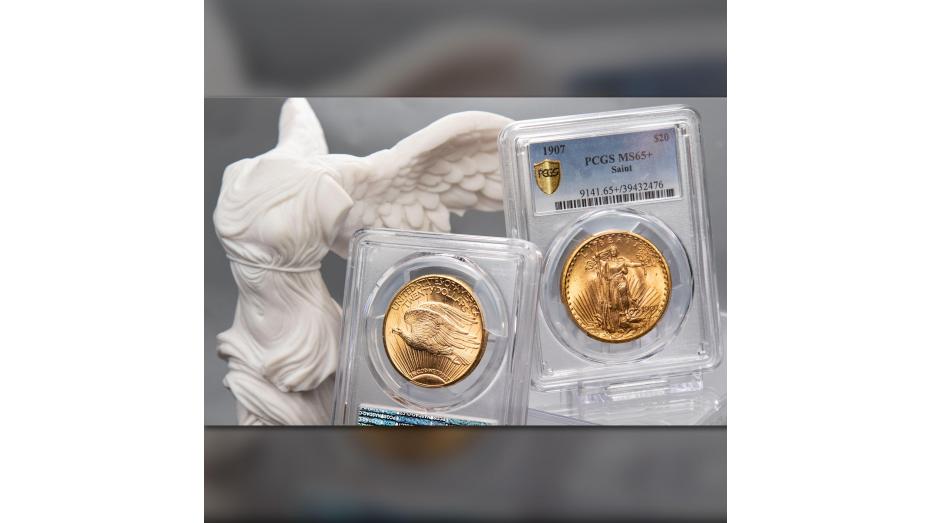The Nike of Samothrace: The Greek Icon that Inspired Augustus Saint-Gaudens
The name “Augustus Saint-Gaudens” looms as large as any in the history of American numismatics. Between the Indian Head Gold Eagle and the Saint-Gaudens Gold Double Eagle, he is remembered for designing two of the most breathtaking and iconic coins in our nation’s history. His innovative vision gave our nation coinage that resembled true pieces of art that all Americans could enjoy. Saint-Gaudens’ vision was largely influenced by the famous works of the ancient Greeks. Particularly, the artist drew inspiration from a famed Greek Statue named the Winged Victory of Samothrace.
The Nike of Samothrace, as the statue is more commonly known, is a sculptural masterpiece that is one of the most revered works of Hellenistic Greek art. Since 1866, the majestic sculpture has stood atop the main staircase at the Musée du Louvre in Paris, France.
Winged Victory’s sculptor is a mystery, but it is believed to have been constructed between 295 and 290 BC at the request of Macedonian King Demetrius Poliorcetes. The sculpture was modeled after Nike, the Greek Goddess of Victory.
Nike was crafted from white Parian marble. She stands at the bow of a warship in a long tunic that conforms to the contours of her body. Her lower half is covered by a mantle typically worn by Greek men and women of that time. The sculpture depicts Nike advancing forward, her right leg ahead of her left. Though Nike’s arms are no longer intact, her elevated right shoulder indicates her right arm was raised to the side in a gesture symbolizing victory.
The sculpture was discovered on the Greek island of Samothrace in 1863 by Charles Champoiseau, a French diplomat who was tasked with finding antiquities on the island. The sculpture was not intact when Champoiseau’s crew discovered it, but was fractured into several pieces. The crew decided to bring the sculpture fragments back to France for restoration.
Adrien Prevost de Longperier, who served as the Louvre’s Director of Antiquities at the time, was tasked with restoring Nike. The original pieces of the statue were restored and pieced together, including Nike’s wings and the ship shaped foundation. Nike’s head and arms were not recovered from Samothrace, and Longperier ultimately decided not to recreate those features.
Saint-Gaudens’ first work inspired by the Nike of Samothrace came in 1902, when he cast his own sculpture of Nike for a monument honoring Civil War General William Tecumseh Sherman. His rendering of Nike shows the goddess striding forward with an outstretched arm, presenting her as the guiding force of victory. She wears a crown of laurel and holds a palm frond in her left hand, both of which are traditional symbols of triumph.
Just a few years later, Saint-Gaudens once again turned to Nike when crafting his rendition of Lady Liberty on America’s new gold double eagle. On the double eagle, just as in his Nike statue, Liberty strides forward in a triumphant fashion. Her palm frond was replaced by an olive branch, symbolizing the peace she strives to bring the world. Again, her arm is outstretched, and it now holds a torch of enlightenment that guides her path to the rest of the world.
Without doubt, the Nike of Samothrace is one of the most celebrated sculptures in Western history. As such, it is fitting that the statue would serve as the catalyst for two of Augustus Saint-Gaudens’ most acclaimed works. His interpretation of Nike provided an entire nation with artistic reminders of its own triumphant history.






